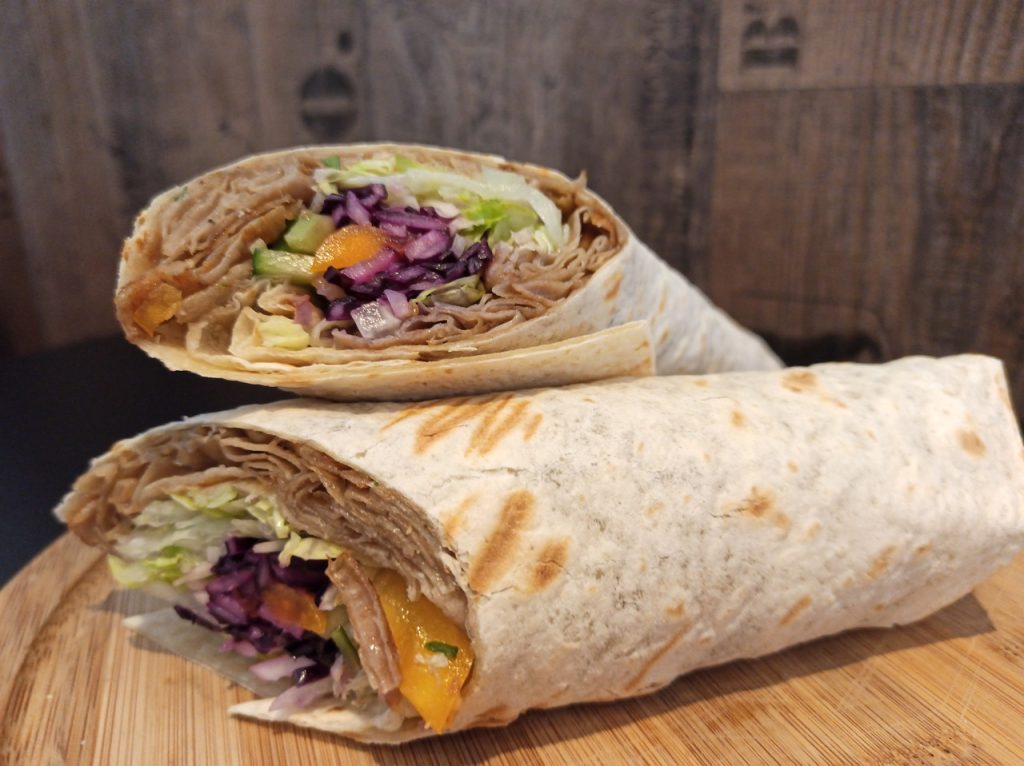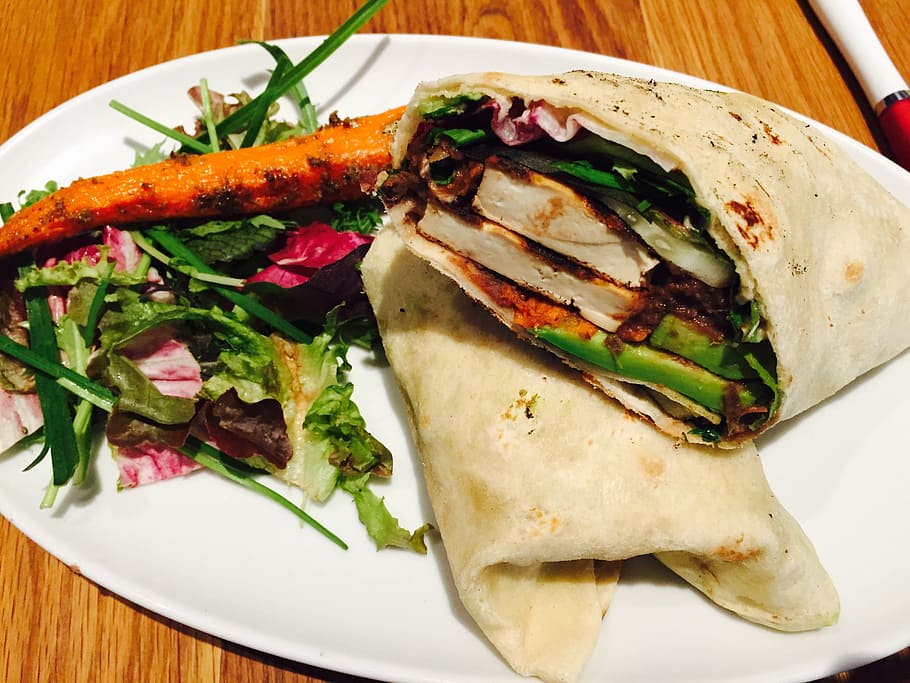In the culinary world, exploring the delectable diversity of international cuisines is an adventure for the taste buds. Today, we embark on a flavorful journey as we delve into the showdown between two mouthwatering creations: Shawarma and Wrap. These handheld delights offer a tantalizing combination of ingredients encased in a soft, portable package. Let’s unravel the origins, compare their ingredients and taste, learn how to prepare them at home, and ultimately decide which one reigns supreme.
The Origin: Shawarma vs Wrap
Shawarma, a Middle Eastern favorite, traces its roots back to the Ottoman Empire. It evolved from the traditional cooking technique of grilling marinated meat on a vertical spit. This vertical rotisserie allowed for even cooking and resulted in succulent, thinly sliced meat, typically served in pita bread or flatbread alongside fresh vegetables and flavorful sauces.

On the other hand, wraps have a more diverse background. They draw inspiration from various cultures, including the Mexican burrito and the Greek souvlaki. Wraps became increasingly popular due to their versatility and ability to adapt to different culinary traditions. A wrap typically consists of a tortilla or flatbread filled with a variety of ingredients, such as meat, vegetables, sauces, and condiments.
Comparison of Ingredients and Taste:
When it comes to ingredients, both Shawarma and Wrap offer a wide array of possibilities. Shawarma traditionally features marinated slices of chicken, lamb, beef, or a combination thereof. These meats are seasoned with aromatic spices like cumin, paprika, turmeric, and garlic, infusing them with rich flavors. Vegetables such as tomatoes, cucumbers, lettuce, and onions add freshness and crunch to the mix. A drizzle of tangy yogurt-based sauce, tahini, or garlic sauce elevates the taste to new heights.

Wraps, on the other hand, embrace a broader spectrum of ingredients. They accommodate various proteins like grilled chicken, beef, shrimp, or even vegetarian options like falafel or grilled vegetables. Wraps also provide the opportunity to explore an array of fillings, such as crispy lettuce, juicy tomatoes, bell peppers, onions, cheese, and condiments like mayonnaise, ranch dressing, or spicy sauces. The combinations are limited only by one’s imagination, offering a world of flavors in a single bite.
How to Make Shawarma and Wrap at Home?
Preparing Shawarma at home requires marinating your choice of meat overnight, allowing the flavors to permeate. You can then grill the marinated meat or use an oven to achieve tender slices. Heat the pita bread or flatbread, layer it with the cooked meat, and garnish with fresh vegetables and your preferred sauce. Roll it tightly and secure it with parchment paper or aluminum foil for easy handling.
To create a delightful wrap at home, start by choosing your favorite tortilla or flatbread. Heat it gently to make it pliable. Spread a thin layer of sauce or dressing on the surface, then layer your chosen proteins, vegetables, and cheese. Roll it tightly, ensuring the filling is secure, and slice it diagonally for an attractive presentation.
Conclusion: Shawarma vs Wrap
In the epic clash of Shawarma versus Wrap, both contenders showcase their distinct charms. Shawarma impresses with its robust Middle Eastern flavors, tender meat, and complementary sauces, while wraps embrace a wider range of culinary influences, allowing for endless creative possibilities. Whether you crave the smoky allure of Shawarma or the customizable appeal of wraps, these handheld delicacies offer a satisfying experience for food enthusiasts worldwide.




Leave a Comment